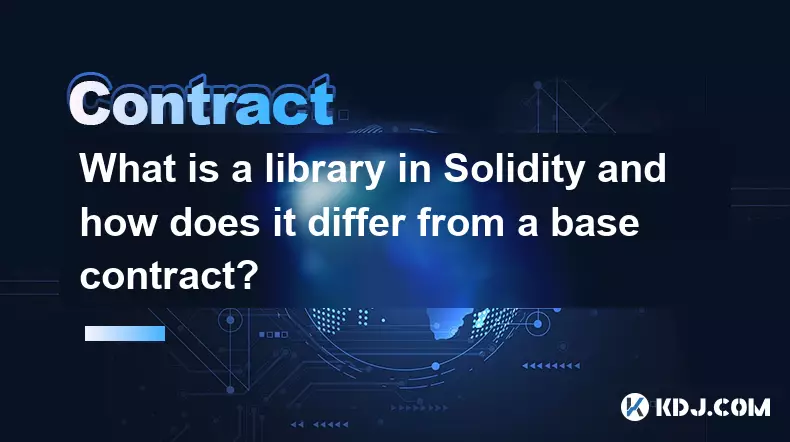-
 bitcoin
bitcoin $103128.103252 USD
-3.33% -
 ethereum
ethereum $3437.127692 USD
-4.86% -
 tether
tether $0.999700 USD
-0.02% -
 xrp
xrp $2.403993 USD
-5.73% -
 bnb
bnb $961.374676 USD
-4.11% -
 solana
solana $154.938665 USD
-8.18% -
 usd-coin
usd-coin $1.000113 USD
0.03% -
 tron
tron $0.298122 USD
0.30% -
 dogecoin
dogecoin $0.172428 USD
-5.76% -
 cardano
cardano $0.557625 USD
-7.13% -
 hyperliquid
hyperliquid $38.740701 USD
-6.51% -
 chainlink
chainlink $15.306051 USD
-7.51% -
 bitcoin-cash
bitcoin-cash $507.558648 USD
-3.26% -
 stellar
stellar $0.281899 USD
-6.74% -
 unus-sed-leo
unus-sed-leo $9.241811 USD
0.57%
A Guide to Swing Trading XRP Perpetual Contracts
XRP perpetual contracts allow leveraged, indefinite speculation on price without owning XRP, using funding rates to align with spot markets.
Oct 28, 2025 at 09:00 am

Understanding XRP Perpetual Contracts
1. XRP perpetual contracts are derivative financial instruments that allow traders to speculate on the price of XRP without owning the underlying asset. Unlike traditional futures, these contracts do not have an expiration date, enabling positions to be held indefinitely as long as margin requirements are met.
2. Funding rates play a crucial role in perpetual contracts. These periodic payments are exchanged between long and short position holders to keep the contract price aligned with the spot market. Traders must monitor funding rates closely, as high positive rates can erode profits for long positions, while high negative rates impact short positions.
3. Leverage is available on most perpetual contract platforms, often ranging from 5x to 100x. While leverage amplifies potential gains, it also increases the risk of liquidation. Proper risk management, including setting stop-loss orders and avoiding over-leveraging, is essential when trading XRP perpetuals.
4. The bid-ask spread and liquidity vary across exchanges. High liquidity ensures tighter spreads and faster order execution, which is particularly important during volatile market movements. Binance, Bybit, and OKX are among the top platforms offering robust XRP perpetual markets.
Identifying Swing Trading Opportunities
1. Swing trading relies on capturing medium-term price movements, typically lasting from several hours to several days. To identify such opportunities in XRP, traders analyze technical indicators like moving averages, RSI (Relative Strength Index), and MACD (Moving Average Convergence Divergence).
2. Chart patterns such as ascending triangles, flags, and double bottoms often signal potential breakouts or reversals. For instance, a breakout above resistance on increased volume may indicate the start of an upward swing, favoring long entries.
3. Support and resistance levels derived from historical price action help define entry and exit points. Fibonacci retracement levels are frequently used to anticipate pullbacks within a broader trend, offering strategic zones to enter trades.
4. Volume analysis complements price action. A surge in trading volume during a breakout adds credibility to the move, reducing the likelihood of a false signal. Conversely, low-volume breakouts should be treated with caution.
Risk Management Strategies
1. Position sizing is critical in preserving capital. Most professional swing traders allocate only a small percentage of their total portfolio—often between 1% and 5%—to a single trade. This limits exposure even if the market moves sharply against the position.
2. Setting a stop-loss below key support for long trades, or above resistance for short trades, helps minimize losses during unexpected reversals. Trailing stops can also be employed to lock in profits as the price moves favorably.
3. Avoid holding positions through major news events such as regulatory announcements or exchange delistings, which can trigger sharp volatility. XRP’s price has historically reacted strongly to legal developments involving Ripple Labs.
4. Monitoring open interest and liquidation heatmaps provides insight into market sentiment. Sudden spikes in long or short liquidations can precede sharp price reversals, serving as early warning signs for active traders.
Executing and Monitoring Trades
1. Once a setup is confirmed, enter the trade with a limit order to avoid slippage, especially during fast-moving markets. Market orders may execute at unfavorable prices during sudden volatility.
2. After entry, actively monitor the trade using real-time charts and alerts. Key metrics include unrealized PnL, margin level, and estimated liquidation price. Most platforms offer dashboard widgets to track these parameters efficiently.
3. Take-profit levels should be based on technical targets, such as previous swing highs or measured moves derived from chart patterns. Scaling out of positions—closing partial lots at different targets—can optimize returns while reducing risk.
4. Adjust stop-loss levels as the trade progresses to protect gains. For example, after a strong upward move, moving the stop to breakeven eliminates downside risk on the remaining position.
Frequently Asked Questions
What is the difference between spot trading and perpetual contracts?Spot trading involves buying and owning actual XRP tokens, while perpetual contracts allow speculation on price movements using leverage without ownership. Perpetuals include funding fees and carry liquidation risks absent in spot trading.
How do funding rates affect my XRP perpetual position?Funding rates are paid every eight hours between long and short holders. If you hold a long position when funding is positive, you pay the rate; if short, you receive it. High funding can significantly impact profitability over time.
Can I swing trade XRP during low volatility periods?Swing trading becomes less effective when volatility is low because price movements are smaller and trends less defined. Traders often wait for volatility expansions, signaled by indicators like the Average True Range (ATR), before initiating new setups.
What timeframes are best for XRP swing trading?The 4-hour and daily charts are commonly used for identifying swing trade setups. Lower timeframes like 1-hour can assist in refining entry points, while higher timeframes provide context for the overall trend direction.
Disclaimer:info@kdj.com
The information provided is not trading advice. kdj.com does not assume any responsibility for any investments made based on the information provided in this article. Cryptocurrencies are highly volatile and it is highly recommended that you invest with caution after thorough research!
If you believe that the content used on this website infringes your copyright, please contact us immediately (info@kdj.com) and we will delete it promptly.
- XRP ETF Approved, Bitcoin Stabilizes, Crypto Updates: What's Next?
- 2025-11-12 19:00:00
- Evercade Alpha Taito Edition: Bartop Behemoth or Redundant Retro?
- 2025-11-12 19:15:02
- Zcash in 2025: Buy, Hodl, or Bye-Bye?
- 2025-11-12 19:00:02
- XRP Tundra's Audited Presale: Riding the Wave of Transparency in Crypto
- 2025-11-12 19:00:02
- MEXC, Chiliz, CHZ Frenzy: A Million-Dollar Fan Fiesta!
- 2025-11-12 19:05:01
- Visa, Stablecoin, and USDC: A New Era of Payments?
- 2025-11-12 19:40:01
Related knowledge

What is a Denial of Service (DoS) attack in a smart contract and what are its common forms?
Nov 10,2025 at 05:20am
Understanding Denial of Service in Smart Contracts1. A Denial of Service (DoS) attack in the context of smart contracts refers to a scenario where a m...

What is a cryptographic nonce used for in transaction signing?
Nov 11,2025 at 05:59am
Understanding Cryptographic Nonces in Blockchain Transactions1. A cryptographic nonce is a random or pseudo-random number used only once in the contex...

How does inheritance work in Solidity smart contracts?
Nov 11,2025 at 10:40pm
Inheritance in Solidity: Building Modular Smart Contracts1. Inheritance in Solidity allows one contract to adopt the properties and functions of anoth...

What is a Minimal Proxy Contract (EIP-1167) and how does it save gas on deployment?
Nov 12,2025 at 11:39am
What is a Minimal Proxy Contract (EIP-1167)?1. A Minimal Proxy Contract, standardized under Ethereum Improvement Proposal (EIP) 1167, is a lightweight...

What is a library in Solidity and how does it differ from a base contract?
Nov 12,2025 at 09:19am
Understanding Libraries in Solidity1. A library in Solidity is a special type of contract designed to hold reusable functions that can be shared acros...

How do you safely send Ether to another contract?
Nov 09,2025 at 06:40pm
Sending Ether to Smart Contracts: Key Considerations1. Verify that the receiving contract has a payable fallback function or a designated payable func...

What is a Denial of Service (DoS) attack in a smart contract and what are its common forms?
Nov 10,2025 at 05:20am
Understanding Denial of Service in Smart Contracts1. A Denial of Service (DoS) attack in the context of smart contracts refers to a scenario where a m...

What is a cryptographic nonce used for in transaction signing?
Nov 11,2025 at 05:59am
Understanding Cryptographic Nonces in Blockchain Transactions1. A cryptographic nonce is a random or pseudo-random number used only once in the contex...

How does inheritance work in Solidity smart contracts?
Nov 11,2025 at 10:40pm
Inheritance in Solidity: Building Modular Smart Contracts1. Inheritance in Solidity allows one contract to adopt the properties and functions of anoth...

What is a Minimal Proxy Contract (EIP-1167) and how does it save gas on deployment?
Nov 12,2025 at 11:39am
What is a Minimal Proxy Contract (EIP-1167)?1. A Minimal Proxy Contract, standardized under Ethereum Improvement Proposal (EIP) 1167, is a lightweight...

What is a library in Solidity and how does it differ from a base contract?
Nov 12,2025 at 09:19am
Understanding Libraries in Solidity1. A library in Solidity is a special type of contract designed to hold reusable functions that can be shared acros...

How do you safely send Ether to another contract?
Nov 09,2025 at 06:40pm
Sending Ether to Smart Contracts: Key Considerations1. Verify that the receiving contract has a payable fallback function or a designated payable func...
See all articles


























![[4K 60fps] no care by crashpancake2 (1 Coin) [4K 60fps] no care by crashpancake2 (1 Coin)](/uploads/2025/11/12/cryptocurrencies-news/videos/6913a8862890b_image_500_375.webp)















































